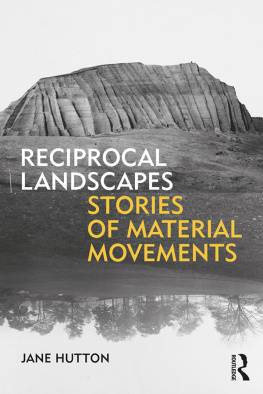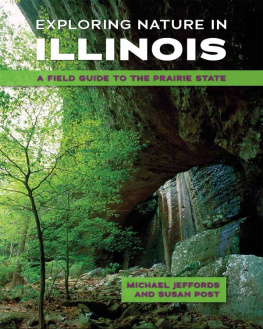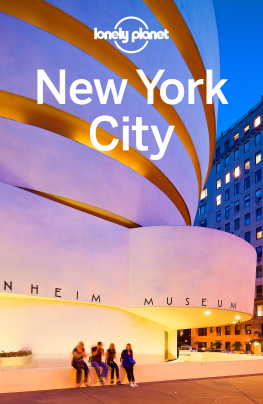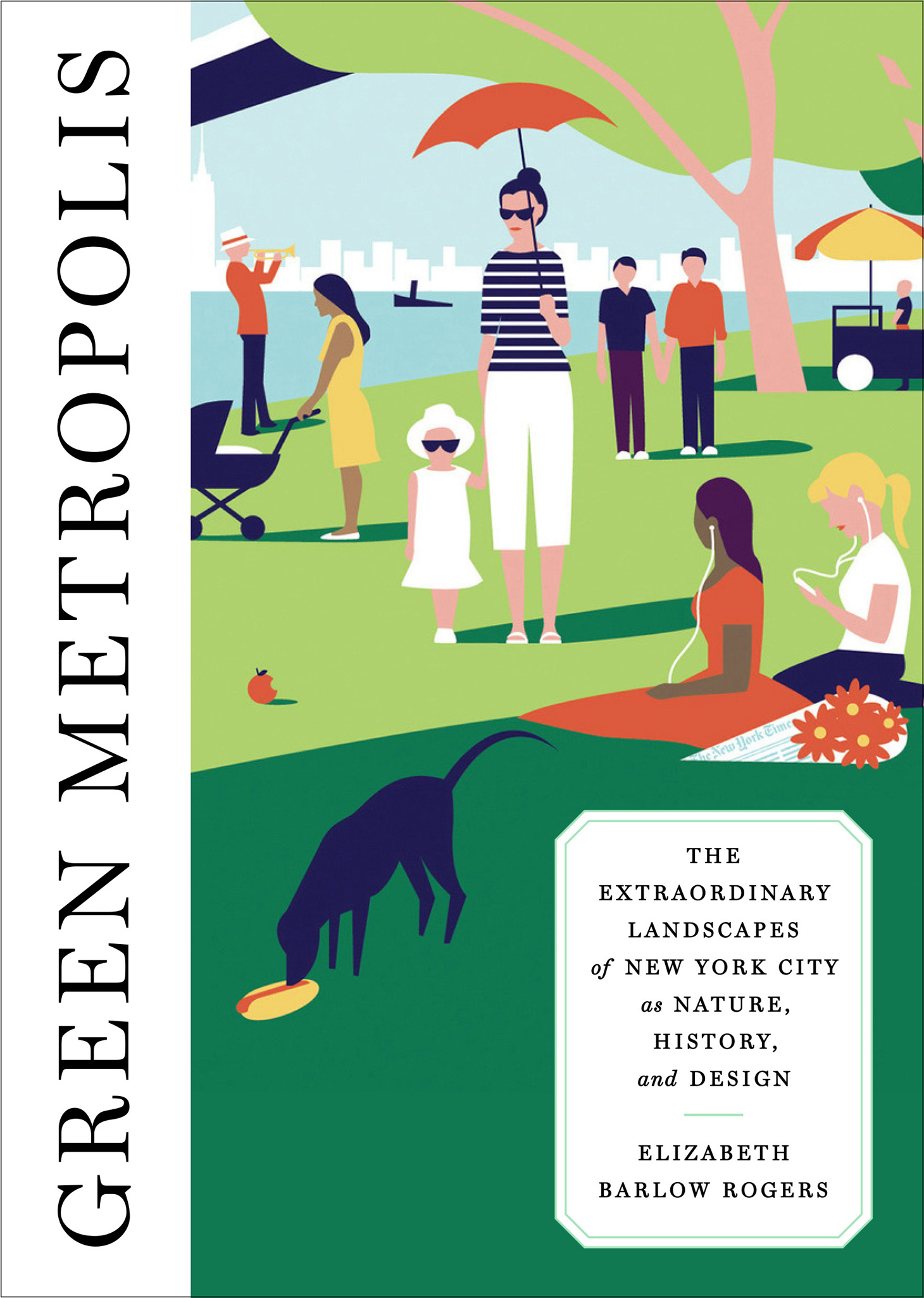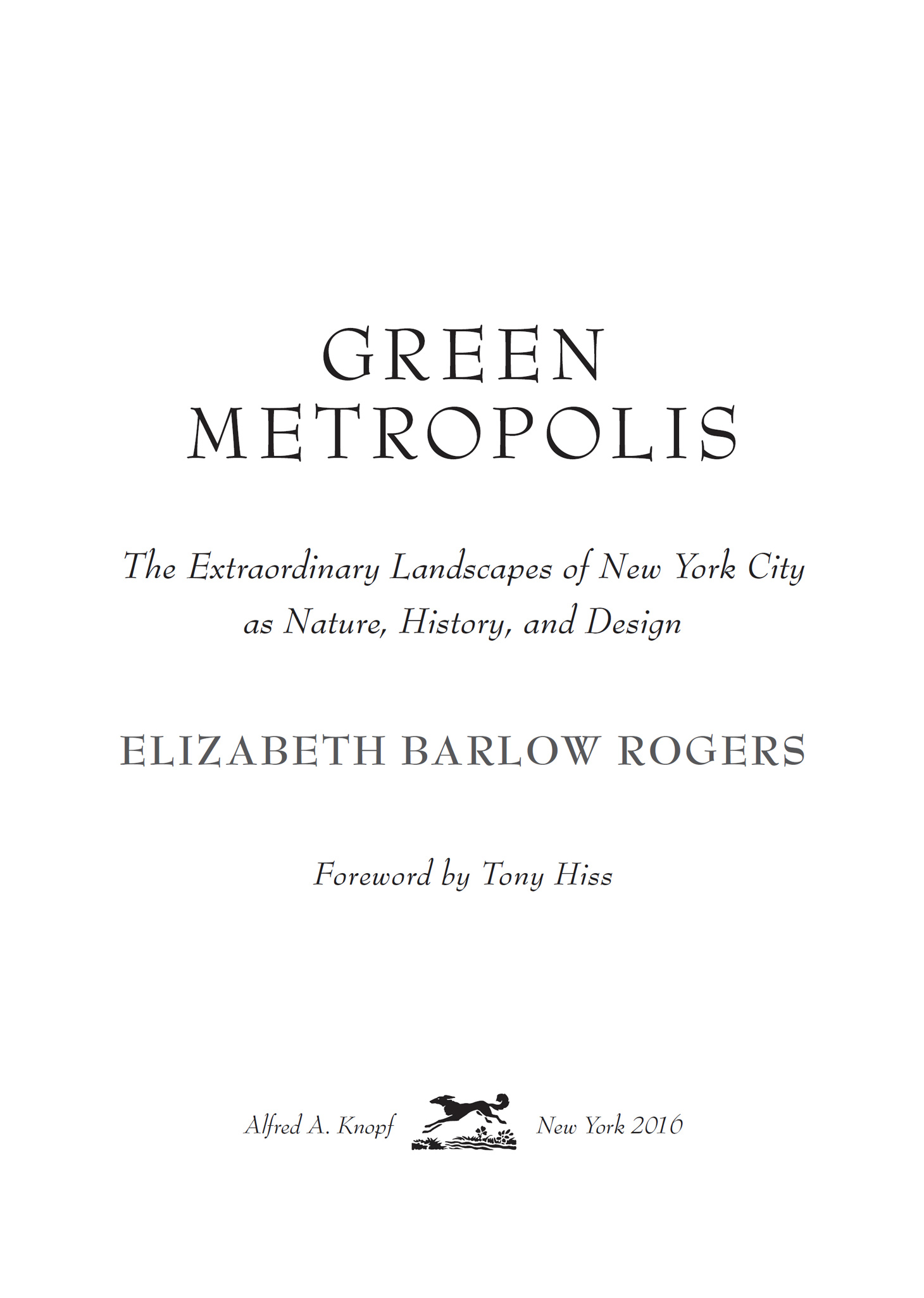FOREWORD
Legacy
TONY HISS
A mong her many exceptional talents, Betsy Barlow Rogers, who a generation ago organized Central Parks rescue when it was at the point of collapse, is an urban trailblazera pusher of the envelope, a seer into the beyondwho compiles compelling, meticulously and joyfully observed Wont you join me? updates from a landscape whose very existence she helped reveal: the deep countryside still spread out across all five boroughs of densely settled New York City. In Green Metropolis, which is in part a tapestry woven from such accounts, she joins, at one point, a small group that, on a single, two-hour forest walk on Staten Island, uncovers forty-five species of mushrooms just by peering around tree stumps and under fallen leaves. On another day, in Queens, sloshing in waders through shallow waters in Jamaica Bay, the great estuary thats perhaps twenty-four times the size of Central Park, she has to make way for shorebound horseshoe crabs, whose ancestors began crawling onto sandy beaches in springtime hundreds of millions of years ago, that are gently but insistently bumping against her legs.
On another Staten Island hike, through old woods in High Rock Park renowned for their tranquillity, she is immersed by a loud ringing sound something between a singing steam kettle and jingle bells. Coming from overhead and from every point in the compass, this is a chorus produced by thousands of male, mate-seeking seventeen-year locusts, or cicadas, which for only a few days will remain perched in the branches of the tall High Rock trees. A century ago, during an earlier cicada cycle, The New York Times likened this overwhelming song to the simultaneous tuning of all the fiddles in the world. Whenever it recurs, as it has for the last half-million years, it is, collectively, as loud and insistent as a snowmobile or a motorcycle, as shocking and inescapable as a thunderclap at dawn.
Spoiler alert: Individually these adventures are vivid; cumulatively, they can rearrange your mind so thoroughly you never look at things the same way again. In 1971, Betsy Rogerss first book about exploring the citys countryside, The Forests and Wetlands of New York City, was exactly the kind of awakening jolt for many people that Green Metropolis will now be for many more. In retrospect, that earlier book was more like the short story or sketch that years later would emerge as a many-layered, multidimensional, fully realized work (but narrated with the same lightness of touch). Forests and Wetlands demonstrated once and for all that, damaged and ignored as it was, behind the buildings and under the asphalt, the preexisting natural New York is a permanent presence and resident in the city, its strength and resilience marvelously intact. It has friendsfierce champions in each borough and every neighborhood. Without ever saying that this was what she was up to, Betsy Rogers had flipped figure and ground, and you could no longer not see a green metropolis wherever you looked.
Green Metropolis has an advantage, because now theres so much more to report on. Forests and Wetlands was a before book, a prelude: Central Park and Prospect Park and dozens of other languishing North American city parks had not yet been restored and transformed; the genius of their designer, Frederick Law Olmsted, was still only about to be rediscovered, and volume after volume of his papers and plans and dreams were not yet in print. His deep-rooted understanding of parks and people was not yet the guiding principle it has since become: the idea that parks are a physical embodiment of modern democracy, an actual melting pot where people from all walks of life can find their common humanity.
These recent upheavals in attitudes and approaches give Green Metropolis a special, buoyant flavor. Acting locally, for instance, is altogether essential for acting globally. Redesigning the Ramble in Central Parkone of Betsy Rogerss new storiesso that its beautiful woods have unsightly stumps, creates habitat for birds and grows the insects they eat. This also maintains the integrity of the hallway in one of the longest homes anywhere: migratory birds arent so much en route somewhere as they are moving around within a unified, three-dimensional, hemisphere-encompassing air-and-land continuum, an immense structure that twice a year allows millions of them to shuttle back and forth between South America and Canada.
Perhaps the most fascinating of these many new stories, one thats both sobering and exhilarating, is Green Metropoliss account of how weve finally outgrown what Betsy Rogers calls marshfillher word for landfill, itself a spuriously clean-sounding word for dumping garbage and rubble into wetlands along the edges of the city. The excuse, the punch line, the lollipop at the end of the ordeal, was that someday the landfills would be closed, capped, and turned into parks. With the discovery that wetlands are ecologically goldenintense incubators of life that also hold back floodwaters and storm surgesthis had to stop, but the aftermath has been unexpected.


